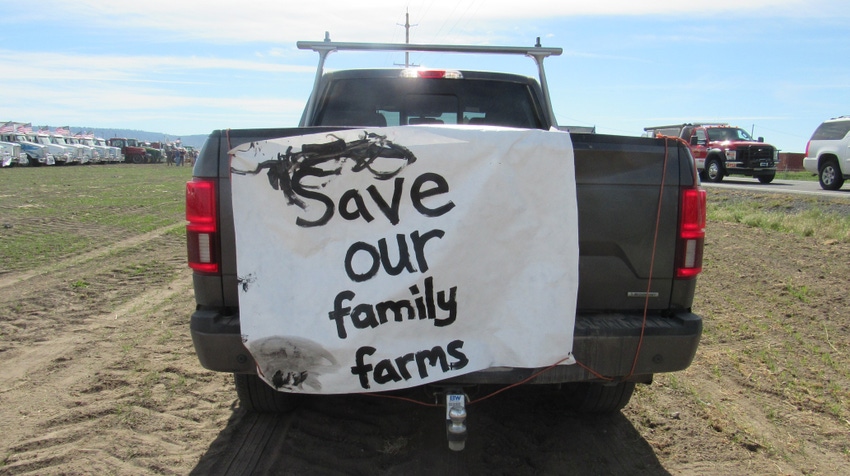August 24, 2022

The Klamath Irrigation District was holding an emergency meeting late Aug. 23 to discuss how to respond to what district officials call a "letter of coercion" from the U.S. Bureau of Reclamation, which orders area water managers to stop diverting from Upper Klamath Lake.
The Aug. 22 letter accuses KID officials of not complying with the federal shutoff notice, and threatens to disqualify areas served by the district from receiving drought relief funding.
"The coercion is not received well by the District Manager," the district posted on LinkedIn. "The district has asked repeatedly for a legal justification, and (Reclamation Commissioner) David Palumbo provides us with threats."
The letter followed one sent Aug. 18 to KID and two other districts within the Klamath Irrigation Project in Northern California and Southern Oregon, prompting loud complaints from the districts that ending water deliveries now would cause crops to burn up in the field before harvest.
"Reclamation keeps changing the rules," Klamath Water Users Association president Ben DuVal told the California Farm Bureau. He added the amount of water the bureau is keeping in the lake exceeds what is needed for endangered suckers.
Related: Little water allocated to Klamath Basin growers
Reclamation announced in April that only about 50,000 acre-feet of water would be allocated to farmers in the Klamath Basin this year -- a small fraction of the roughly 350,000 acre-feet the project normally receives when there isn't a drought.
The allocation allowed for limited irrigation beginning on April 15 and was subject to meeting an end-of-water-year Upper Klamath Lake elevation of no less than 4,138.15 feet, with the objective of no less than 4,139.2 feet through July 15, according to a bureau news release.
Inflows fall short
Water flow into the lake this season will amount to about 335,000 acre-feet, while the bureau is requiring about 407,000 acre-feet be released into the Klamath River for fisheries, KWUA director and attorney Paul Simmons told the Farm Bureau.
The bureau initially allocated 33,000 acre-feet to farmers last year but cut the allotment to zero last May as the drought worsened. The basin received below-normal precipitation again last winter.
In another water dispute, two Northern California tribes say illegal diversions by ranchers along the Shasta River are affecting downstream salmon fisheries. The Shasta is a key tributary of the Klamath River.
Since August of 2021, water users in Siskiyou County’s Shasta and Scott River Valleys have been subject to a state curtailment order, which seeks to maintain minimum flows amid the drought. Last week, California's State Water Board issued a letter to the Shasta River Water Association stating that its water right "is curtailed under the drought emergency regulation and SRWA should not be diverting water from the Shasta River watershed.”
The Karuk and Yurok tribes said in a news release the diversion led to a 37% decrease in Shasta River flows, from 58 cubic feet per second (cfs) to 36 in about 2 hours on Aug. 17. The tribes say the diversion has complicated recovery after a recent fire-induced mudslide killed all fish in a 60-mile reach of the Klamath River.
About the Author(s)
You May Also Like




